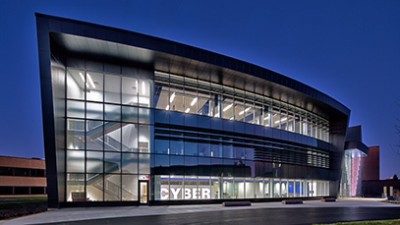
Ji Hwan Park
Assistant Professor
School of Interactive Games and Media
Golisano College of Computing and Information Sciences
Office Location
Office Mailing Address
20 Lomb Memorial Drive, Rochester, NY 14623
Ji Hwan Park
Assistant Professor
School of Interactive Games and Media
Golisano College of Computing and Information Sciences
Bio
Dr. Ji Hwan Park is a data visualization researcher who analyzes and visualizes various types of data, ranging from 2D and 3D data to high-dimensional and biomedical sequence data. Before joining RIT, he was an assistant computational scientist at Brookhaven National Lab and an assistant professor in the School of Computer Science at the University of Oklahoma. His research interests are accessible data visualization, digital twins, human-AI teaming, VR/AR, and crowdsourcing.
Areas of Expertise
Artificial Intelligence
Digital Twins
High-Performance Graphics
Interactive Media and Wellness
Virtual Reality
Select Scholarship
Published Conference Proceedings
Tran, Tien, Hae-Na Lee, and Ji Hwan Park. "Discovering Accessible Data Visualizations for People with ADHD." Proceedings of the CHI Conference on Human Factors in Computing Systems, Honolulu HI USA, May 11 - 16, 2024. Ed. Florian Floyd Mueller, et al. New York, NY: ACM, 2024. Web.
Journal Paper
Park, Ji Hwan, et al. "IdMotif: An Interactive Motif Identification in Protein Sequences." IEEE Computer Graphics and Applications 44. 3 (2024): 114 - 125. Web.
Currently Teaching
IGME-236
Experience Design for Games & Media
3 Credits
This course examines the concepts of interface and interaction models in a media-specific context, with particular emphasis on the concept of the immersive interface. This course explores concepts such as perception, expectation, Gestalt Theory, interactivity, Semiotics, presence, and immersion in the context of media application development and deployment. In addition, underlying concepts of cognitive psychology and cognitive science will be integrated where appropriate. These theories are then integrated in the exploration of the immersive interface, and with related concepts such as user-level-interface modification, augmentation of identity, and the interface as a social catalyst.
IGME-309
Data Structures & Algorithms for Games & Simulations II
3 Credits
This course continues the investigation into the application of data structures, algorithms, and fundamental Newtonian mechanics required for the development of video game applications, simulations, and entertainment software titles. Topics covered include quaternion representation of orientation and displacement, cubic curves and surfaces, classifiers, recursive generation of geometric structures, texture mapping, and the implementation of algorithms within game physics engines for collision detection and collision resolution of rigid bodies, and the numerical integration of the equations of motion. In addition, advanced data structures such as B+ trees and graphs will be investigated from the context of game application and entertainment software development. Programming assignments are a requirement for this course.




